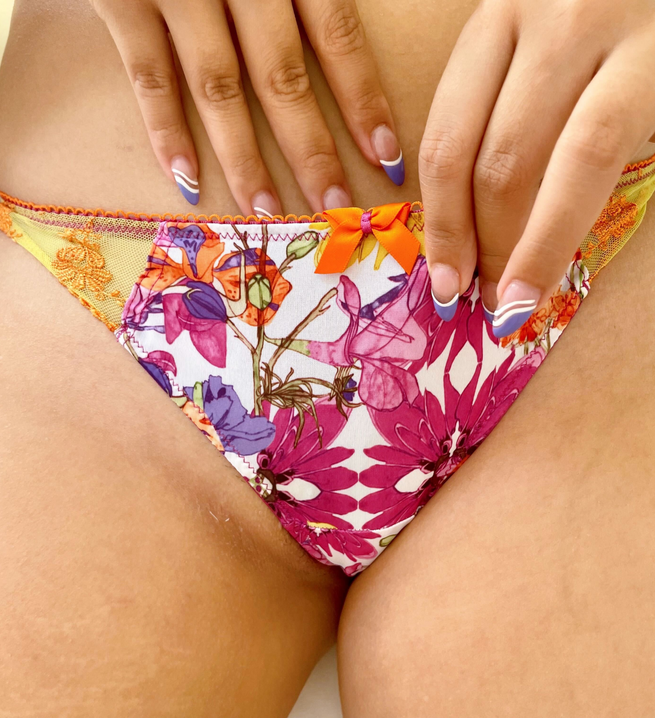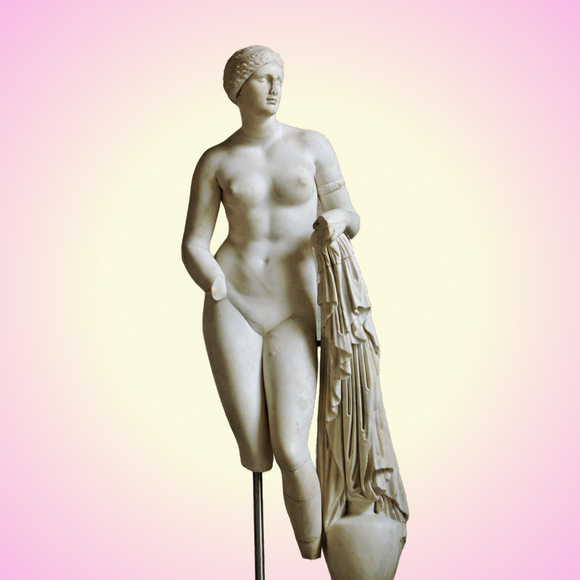
Hairless Vulvas in Art History
Shea Sweeney
Did Aphrodite shave or wax?
Yes, I am actively looking for someone to blame for the whole hairless vulva > hairy vulva situation. No thank you for the razor burn, countless dollars thrown to hot wax, and time spent removing pubic hair when I could be thinking about, I don’t know, making an NFT or this TikTok. I am firmly in the camp of all people have the right to body autonomy and if you want to be hairless and slippery from the neck down like a dolphin then that is your goddamn right. I’m actually equally disinterested in any argument that hairy is objectively better. Because, personally, I believe whatever you want is valid. I just don’t like being pressured into thinking that one is better for reasons of perceived hygiene or sexual desirability. There’s a Lolita-ness to the whole fixation with being bare that leaves me deeply uncomfortable. I know that I was not born desiring to have a bare vulva. I know that hair grows there naturally and serves the purpose of protecting my genitals. So, why is the image of the hairless vulva so seemingly ubiquitous and treated with such superiority when it’s not typically natural on an adult and isn’t particularly practical?
The first culprit that came to mind was mainstream pornography. The fetishization of young women (Pornhub reported that “Teen” was the fifth most searched term in 2019), the image of the hairless vulva (often including a labia of a certain size and shape) is reiterated over and over again, seemingly infinitely. I’d love to blame dear old Pornhub for my woes, but that would be a grave oversimplification of what is actually a long (very long) and winding history dating back to the earliest known depictions of the human body in art. We’re talking 35,000 BCE (what does that even mean, cannot compute). Early humans carved a vulva on a cave wall in what is now Vézère Valley, France. It’s a rather crude rendition, but clearly sans hair. Of course, the question is; was that intentional? Or is it just really hard to carve tiny hairs into rock? I’m no expert in Paleolithic art (not that anyone thought I was), but my initial reaction was, yeah, it’s obviously just very hard to create detail with a blunt object in a dark cave…However, my pet theory was immediately challenged when I learned that starting in 29,000 BCE little Venus statues began to show up all over Europe and Russia, depicting women with huge boobs, curvy butts, and hairless vulvas. Not even the slightest etching of public hair. These Venus statues walked so that Bratz dolls could run. And later on, all around the world, there are more examples still of the ever persistent hairless vulva. “The Dancing girl of Mohenjo-Daro” from modern day northern India, depictions of the goddess Hathor in ancient Egypt, The “Burney Relief” in what is now Iraq. The list goes on.
The Cheeky The Cheeky The Cheeky The Cheeky
Recommended For You
-

How Do I Prevent Infection When Touching a Vulva?
Touching a vulva with hands, toys, genitals, etc can spread bacteria and contribute to...Read more -

Cheeky Weekly #1
Welcome to The Cheeky Weekly! This is our space for sharing interesting reads, views and...Read more -

Rachel Moranis of Stardust
It’s happening in real time. Menstrual health and wellness is far less taboo than...Read more









